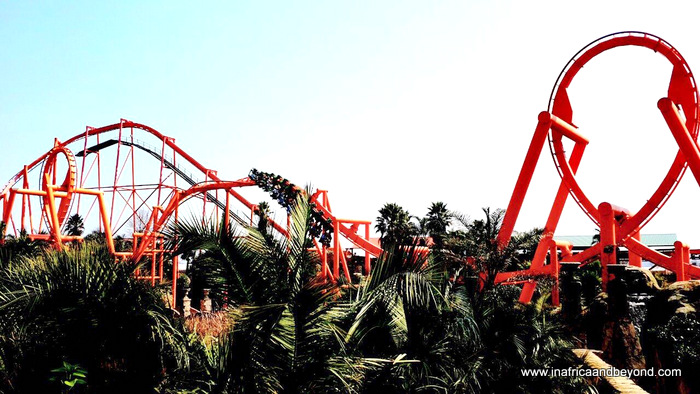The Johannesburg North Attractions PDFs
The Johannesburg North Attractions PDFs
Blog Article
Johannesburg North Attractions Fundamentals Explained
Table of ContentsOur Johannesburg North Attractions PDFsRumored Buzz on Johannesburg North AttractionsWhat Does Johannesburg North Attractions Mean?What Does Johannesburg North Attractions Do?The Ultimate Guide To Johannesburg North AttractionsWhat Does Johannesburg North Attractions Do?
The city owes its area to the presence of a a lot more precious resource: gold. The city expanded on the side of the Witwatersrand Main Reef, a below ground stratum of gold-bearing quartz-silica conglomerate that arcs for numerous miles underneath the Highveld. Many of the gold mines in the city ceased operation in the 1970s, however in its day the Witwatersrand gold sector made up more than 40 percent of the globe's annual gold manufacturing.Johannesburg has a temperate climate. The city enjoys about eight hours of sunshine per day in both winter and summer season.
What rainfall the city receives drops nearly solely in the summertime months, typically in magnificent late-afternoon electric storms., where numerous residents still depend on coal for fuel.

Little Known Questions About Johannesburg North Attractions.
The equilibrium of the city is inhabited by whites. Accommodation varies in personality and high quality.
Physical development, although rather limited by transportation, proceeded promptly as migration to South Africa, and Johannesburg in particular, raised dramatically. This trouble was resolved in the 1930s when the automobile was presented in mass production to South Africa. Autos were, generally, constrained to the affluent, and permitted them to transfer to the north of the city and commute into the centre.
Many bad residential areas were combined, with inadequate blacks and whites living with each other, although the wealthy suburbs were usually scheduled for whites.
The approximated populace of the area is 200,000, [] The number of people living in the inner city on an informal basis is unidentified, as many are illegal immigrants. A lot of higher-income homeowners and white individuals have actually transferred to the northern suburbs and have been changed by lower-income black individuals. The joblessness, education, and age profiles of the location are all unknown, as a result of the trouble of getting dependable information concerning the location.
Some Of Johannesburg North Attractions
Centred on the CBD, the region consists of the suburbs of Yeoville, Bellevue, Troyeville, Jeppestown, and Berea to the eastern. To the west it spreads to Pageview (Johannesburg North attractions) and Fordsburg. There are little enterprise zones to the south, such as City West-Denver and Benrose. Around 800,000 travelers travel through the internal city every day, and it works as a regional purchasing node for site visitors from the southerly suburbs. Yeoville and Bellevue have a mix of apartment or condo structures and single domestic systems on tiny whole lots. The area is located on a mountainous divide that runs from east to west.

Johannesburg Arena, a training school for both the Golden Lions and Orlando Pirates, is nearby. The eastern residential areas of Johannesburg are situated in the city's 7th [] and 9th [] see post regions. The location is also functionally incorporated with East Rand boundary communities outside of the official border of Johannesburg, such as Bedfordview and Edenvale (both component of Ekurhuleni Metropolitan Municipality).
The Single Strategy To Use For Johannesburg North Attractions
R. Tambo International Flight Terminal). The eastern residential areas are some of the earliest locations of Johannesburg, there are large neighborhoods of Jewish and other European backgrounds, most of the populace is English talking. There are three golf programs along with a number of secured ridges with viewsites. There are numerous well-developed and up-market entertainment and buying locations in the eastern such as the Eastgate Mall and the Greenstone buying centre.
The area is mainly composed of old "matchbox" homes, or four-room homes constructed by the government, that were built to supply inexpensive holiday accommodation for black employees throughout apartheid. Soweto is an abbreviation, meaning "South Western Townships". Road after road around is lined with matchboxes; nonetheless, there are a couple of smaller sized locations where flourishing Sowetans have actually developed houses that are much more similar official source in stature with those in more affluent suburbs.
Hostels are one more popular physical function of Soweto. Originally built to house male migrant workers, numerous have been improved as dwellings for couples and family members. The N1 Western Bypass skirts the eastern border of Soweto. The suburban area was not historically permitted to create employment centres within the area, so nearly all of its citizens are commuters to other parts of the city.
Some Of Johannesburg North Attractions
The N1 Western Bypass links the northern suburbs with the north-western suburban areas. The suburbs in the northern suburban areas are mainly official, without considerable locations of informal real estate, or real estate that lacks a long-term framework. This is a well established location, there is a trend of land use adjustment from domestic to industrial, particularly along main arterial roads and around well-known nodes.
The area is well attached to road networks, particularly along the north-south axis formed by the M1 and N1. Roadways to the eastern and west are much less well created, as there are no freeways taking a trip in that instructions. Towards the northern boundary of the city, the density of growth decreases, leaving huge locations of undeveloped land around Midrand.
Examine This Report about Johannesburg North Attractions
The very first residential area to the north of the central city is Parktown, which lies on a hillside forgeting the internal city and Hillbrow. It has several rich homeowners and Edwardian-design mansions, as well as the Education and learning and Medical schools of the University of the Witwatersrand. The huge concrete Charlotte Maxeke Johannesburg Academic Health Center controls the sky line of Parktown.
Report this page